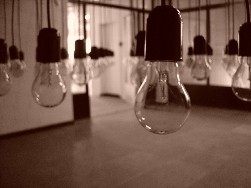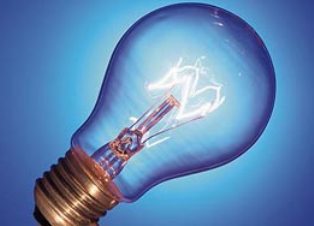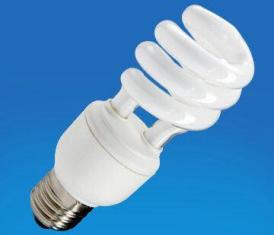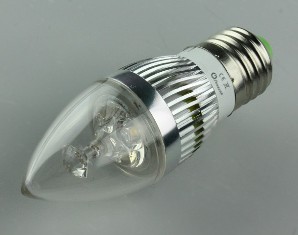Categories: Featured Articles » Sources of light
Number of views: 21982
Comments on the article: 7
Comparative analysis of light sources
Incandescent lamps
 In a flask without air, there is a tungsten filament that heats up when an electric current is passed through it - this is what an incandescent lamp is. For over 120 years they have been the main source of artificial light. The range of incandescent lamps ranges from huge searchlights to miniature ones in pocket flashlights. Incandescent lamps have a very modest light output of 10-15 Lm / W, because the luminous flux of an incandescent lamp is not more than 3000 Lm. Incandescent lamps warm more than they shine: most of the energy goes into heating the filament. Based on this, it is clear that the color temperature of incandescent lamps is closer to warm colors (2400–2700 K).
In a flask without air, there is a tungsten filament that heats up when an electric current is passed through it - this is what an incandescent lamp is. For over 120 years they have been the main source of artificial light. The range of incandescent lamps ranges from huge searchlights to miniature ones in pocket flashlights. Incandescent lamps have a very modest light output of 10-15 Lm / W, because the luminous flux of an incandescent lamp is not more than 3000 Lm. Incandescent lamps warm more than they shine: most of the energy goes into heating the filament. Based on this, it is clear that the color temperature of incandescent lamps is closer to warm colors (2400–2700 K).
The service life of incandescent lamps is also very modest, about 1000 hours. Why do people continue to buy more than 15 billion pieces a year of these rather short-lived and inefficient light sources? There are several reasons: the power of habit, low price (but this does not mean that these lamps are economically viable). But the fact that the luminous flux of energy-saving lamps is several times higher is an indisputable fact!
Read more about incandescent lamps here:
Who actually invented the incandescent lamp
How to choose a quality incandescent lamp
Five reasons why incandescent bulbs fail permanently and how to deal with it

Halogen bulbs
A more modern version of incandescent lamps is “halogen”. They differ from their ancestors by technological innovations: halides in the flask, special quartz glass, special reflectors that return part of the thermal radiation to the spiral. The luminous flux of a halogen lamp is 2 times higher than its predecessors, light output - about 30 Lm / W. And the value of color temperature can be different, depending on technological features: from 3000 to 6000K.
Such parameters make it possible to use them not only in residential premises (mainly in spotlights), but also in industrial. However, a short service life (approximately 2000-4000 hours) and low light output spoil the whole reputation of halogen lamps.
Read about halogen lamps here:
Types of halogen lamps and their features
Lighting calculation example for recessed luminaires with halogen lamps

Fluorescent lamps
A cylindrical glass tube, with electrodes at the edges, into which mercury vapor is pumped - these are briefly what a fluorescent lamp is. Under the influence of electricity, mercury vapors begin to emit ultraviolet light, which causes the phosphor deposited on the glass from the inside to glow with visible light.
Sophisticated design on the verge of chemistry, physics and technology. In addition, these lamps are an example of a compromise in lighting technology. There are fluorescent lamps with three layers of the phosphor, and there are five. So the first, having a higher light output of the order of 104 Lm / W, transmit color worse, and the second, on the contrary, with good color rendering have a light output of no more than 88 Lm / W.The value of the color temperature of fluorescent lamps is 3000 - 7000 K.
The main advantage of fluorescent lamps is durability. They work on average up to 10,000 hours. It is thanks to the efficiency and durability that they are widely used in industrial premises. At temperatures below 10 degrees, the luminous flux of fluorescent lamps decreases, so in outdoor lighting they are not very effective.

Compact fluorescent lamps twisted into a spiral, close in their parameters to tube lamps (Ttsv = 2700–6000 K, light output up to 75 Lm / W) were once called upon to replace incandescent lamps in everyday life, but they did not manage to do this, t. to. very quickly the production of LED lamps began to develop.
More about fluorescent lamps:
How are compact fluorescent lamps
Five myths about energy-saving lamps
T5 fluorescent lamps: prospects and problems of application
LED lamp
It is difficult to describe the design of LED lamps ... there are so many different types and forms of such lamps. In any case, this is a certain number of LEDs, with a power management board in one case. Such a concept as the luminous flux of LED lamps is variable. Because he will be what you need. It depends on the number of diodes, the more there are, the greater the luminous flux. The same thing happens with light output. In this case, the laws of not arithmetic but geometric progression apply. And it’s hard to write about any specific color rendering numbers either. This directly depends on the model of LEDs and, sometimes, on the supply voltage.
If the design of the lamp provides for a change in voltage, then color rendering will also change with it. And by the way, light output too. Therefore, LED lamps are difficult to call lamps, in the usual sense of the word. Rather, it is precisely lamps, not lamps. With different characteristics, or changing.
According to experts, society is on the verge of a general expansion of LED light sources into human life. She has already begun. But so far not very active. And under their onslaught, not only incandescent and halogen lamps, but also luminescent ones will have to retreat. Because the advantages of LED lamps are several times more disadvantages: a long period of work - up to 100,000 hours (11 years of work!), Are not capricious to vibration and drops, are very economical, operate in the temperature range from -50 ... + 60 degrees C, You can get any color, complete fire, electrical and environmental safety.

The main disadvantage of LED lamps is the high cost. Manufacturers are working on cheaper products, promise to lower prices in the next 3-5 years. However, even now this is a one-time investment. It is believed that an LED lamp, on average, pays for itself for six months to a year, saving energy.
At one time, the development of the production of incandescent lamps catalyzed the development of the production of refractory materials and special glass. The expansion of LEDs will provoke the development of technology and new materials.
See also on this topic:
Comparison of different lamps in terms of power and light output
Articles about LED lamps:
Parameters of LED light sources
Challenging LED Lamp Power Issues
Other light sources:
Sodium lamps: dominance of the tamed chemical element
DRV lamps: a popular hybrid of two different sources
See also at bgv.electricianexp.com
:
